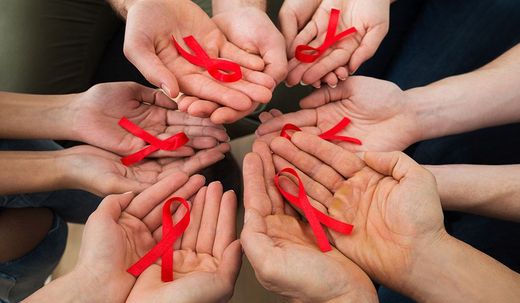Delaying the clamping of the umbilical cord by three minutes may improve children's fine-motor and social skills. The Swedish study published in the journal JAMA Pediatrics randomly assigned 263 full-term babies to either normal cord clamping (within 10 seconds of birth) or at least three minutes after birth.
Four years later, the children underwent a series of tests that assessed their neurodevelopment. Those with delayed cord clamping had better social skills and fine motor skills. However, there was no difference in IQ levels. The benefits were mainly seen in boys. Postponing clamping of the cord allows more foetal blood to flow from the placenta to the newborn.
“During the delayed clamping, the child receives half a cup of extra blood, which contains a lot of iron, and can prevent iron deficiency. There is quite a lot of brain development just after birth. Iron is needed for that process,” said study lead author. The World Health Organization recommends waiting at least one minute after birth to clamp the umbilical cord.
Sober up, old hearts

Despite all the reported heart benefits of moderate alcohol consumption, a Harvard study published in the journal Circulation:Cardiovascular Imaging suggests that even moderate drinking can harm older hearts. Increasing alcohol intake can damage heart structure and function in the elderly. The study analysed the weekly alcohol consumption of 4,466 older adults of average age 76. Echocardiography was used to look at their heart structure and function. In both genders, increasing alcohol intake was associated with larger left ventricular diastolic and systolic diameters and larger left atrial diameter.
Even moderate alcohol intake of two or more servings a day for men was associated with enlargement of the heart's left ventricle. Elderly women were even more susceptible to the harmful effects of alcohol. Just one drink a day was associated with a small reduction in heart function.
“In spite of potential benefits of low alcohol intake, our findings highlight the possible hazards to cardiac structure and function by increased amounts of alcohol consumption in the elderly, particularly among women," added the lead researcher.
Pop the pill with care

Newer versions of oral contraceptives can cause serious blood clots compared to older versions, according to a British study published in The BMJ.
Pills containing newer types of progestogen hormone―drospirenone, desogestrel, gestodene or cyproterone―increased the risk of venous thromboembolism compared to older forms of the pill that contain levonorgestrel, norethisterone and norgestimate.
Venous thromboembolism can cause serious complications, including death.
Researchers analysed prescription data from two medical databases in the UK to measure the association between oral contraceptives and blood clot risk in women aged 15 to 49. Compared to non-users those taking the older forms of the pill were 2.5 times more likely to get blood clots, while those on the newer pills had around 3.6 to 4.3 times increased risk. Overall, women taking the new pills had 1.5 to 1.8 times increased risk of blood clots than those on older pills. The risk of blood clot was lowest for levonorgestrel and norgestimate and highest for desogestrel and cyproterone. The study urges doctors to consider a patient's blood clot risk when prescribing oral contraceptives.
ART of the matter

People diagnosed with the HIV should be started on antiretroviral therapy (ART) immediately to slow the progression of the virus and to lower the risk of developing AIDS or other serious illnesses. ART is much more effective in HIV-infected people when they still have higher levels of CD4+ T cells―immune cells that fight infection and disease―than when their immunity starts to weaken.
The international trial enrolled 4,685 HIV-infected men and women aged 18 and older from 35 countries. All of them had a normal CD4+ cell count (500 cells per cubic millimeter) or higher and had never taken ART. Half of them were randomised to receive ART immediately, while the remaining participants started ART when their CD4+ cell count fell to 350 cells/mm3. For three years the researchers monitored the development of both AIDS-related illnesses and serious non-AIDS events such as cardiovascular diseases, cancer and renal and liver disease, as well as deaths. The risk of developing serious illness or death was 53 per cent lower in the early treatment group compared to those whose treatment was deferred. The reduced risk was strongest for AIDS events. The findings support starting everyone infected with the HIV virus irrespective of their CD4+ T-cell count on ART.
“We now have clear-cut proof that it is of significantly greater health benefit to an HIV-infected person to start antiretroviral therapy sooner rather than later. Moreover, early therapy conveys a double benefit, not only improving the health of individuals but at the same time, by lowering their viral load, reducing the risk they will transmit HIV to others. These findings have global implications for the treatment of HIV,” noted the director of the US National Institute of Allergy and Infectious Diseases, which primarily funded the study.
Did You Know
A British study is urging office workers to stand up for at least two hours a day while on the job and slowly increase it to four hours to reduce the health risks of prolonged sitting such as obesity, heart disease, diabetes, cancer and even premature death.
British Journal of Sports Medicine
Biting the hand that feeds

According to a study published in the American Sociological Review, men and women are more likely to cheat on their spouses if they are financially dependent on them. Stay at home dads are the most likely to stray. A survey of more than 2,750 married people aged 18 to 32 years suggests that in any given year, there is about a 5 per cent chance that women who are completely economically dependent on their husbands will cheat. The rate jumps to 15 per cent for men in marriages where the wife is the sole breadwinner.
The data shows that people like to be relatively equal in a relationship. Especially for men “engaging in infidelity may be a way of reestablishing threatened masculinity. Simultaneously, infidelity allows threatened men to distance themselves from, and perhaps punish, their higher-earning spouses”.
But men and women respond differently when they are the sole breadwinner. Women are least likely to cheat when they earn 100 per cent of the household income. They often try to minimise their achievements and increase their housework. “This emotional and physical work is designed to decrease interpersonal conflict and shore up their husband’s masculinity. It is also aimed at keeping potentially strained relationships intact.”
However, men are least likely to cheat when they bring in 70 per cent of the income. After that, the chances of infidelity gradually rise and men who make 100 per cent of the money are more likely to cheat.
“These men are aware that their wives are truly dependent and may think that, as a result, their wives will not leave them even if they cheat.”
Since the study was done in young couples, the findings may not be relevant for older couples.
Mom feeds and protects

Breastfed babies have a lower risk of developing childhood leukemia, according to an Israeli study published in JAMA Pediatrics.
Leukaemia is the most common type of childhood cancer, accounting for nearly 30 per cent of all childhood cancers.
A review of 18 studies has found that babies who were breastfed for six months or longer have a 19 per cent lower risk of leukaemia than babies who were either not breastfed or breastfed for a shorter period.
A separate analysis of 15 studies found that babies who had ever been breastfed had an 11 per cent lower risk of childhood leukaemia than those who were never breastfed.
The current findings indicate that 14 per cent to 19 per cent of all childhood leukaemia cases can be prevented if children are breastfed for six months or more.
“Breastfeeding is a highly accessible and low-cost preventive public health measure that has been found in numerous studies to be associated not only with lower risk for childhood leukaemia but also with lower risk for Sudden Infant Death Syndrome (SIDS), gastrointestinal infection, ear infection, type 2 diabetes and obesity later in life," said the study's lead author.
"Breast milk is a total food, intended by nature to exclusively supply all of the infant's nutritional needs for the first few months of life. Breast milk is a live substance, containing antibodies manufactured by the mother and other unique qualities that promote a healthy flora in the intestines of the infant and influence the development of the child's immune system."
Germs via contacts

Using contact lens may alter the bacteria in your eyes which may explain why contact lens wearers are more prone to certain eye infections.
For the study presented at the annual meeting of the American Society for Microbiology, researchers compared the composition of bacterial community living in the eyes of nine people who wore contact lens with 11 who didn't.
The human eye has a normal community of bacteria that helps fight infections. But the study found that contact lens usage altered the bacterial population and it more closely resembled those found on eyelid skin rather than typically found in the eyes of non-wearers.
Specifically, the researchers found that the eye surface of contact lens wearers had a greater diversity of bacteria than the skin directly beneath the eye and they had three times the usual levels of certain bacteria than the eyes of those who didn't use contact lenses.
"Our research clearly shows that putting a foreign object, such as a contact lens, on the eye is not a neutral act," said lead investigator.
The researchers are not sure whether these changes are owing to fingers touching the eye, or from the lens's direct pressure on the eye.
“This study suggests that because the offending organisms seem to emanate from the skin, greater attention should be directed to eyelid and hand hygiene to decrease the incidence of this serious occurrence."
Viagra for women

An advisory panel to the US Food and Drug Administration has voted 18-6 to recommend the approval of the first drug to treat low sexual desire in otherwise healthy premenopausal women.
The agency had rejected the drug twice, citing potential side effects which include fainting, nausea, dizziness, sleepiness and low blood pressure. The risk for side effects increased with alcohol and certain antifungal medications and birth control pills.
The approval for flibanserin manufactured by Sprout Pharmaceuticals came with the condition that the company address the safety risks with proper warning labels.
The approval follows intense campaign under the banner “Even the Score” which accused the FDA of gender bias because it had approved Viagra and numerous other drugs to help men with sexual problems while none was available for women.
Flibanserin is a pink pill taken once daily at bedtime and it works by influencing the level of certain chemicals in the brain such as serotonin, norepinephrine and dopamine.
In clinical trials flibanserin showed only modest results. But the proponents of the pill argue that something is better than nothing and the pill will restore libido and self-esteem and restore relationships.
The FDA will make its final decision in August. It usually follows the panel's recommendation.
Did You Know
Cancer survivors whose spouses were depressed were four times more likely to be depressed a year later. But survivors whose spouses reported better mental and physical health had a 30 per cent decrease in the rate of depression a year later.
Cancer Epidemiology, Biomarkers & Prevention
The height-heart link
Shorter people have a greater risk of heart disease, according to a study published in the New England Journal of Medicine.
Scientists have known that height influences heart disease risk, but the mechanism behind the link was not fully understood. The researchers in this study focused on the role genes play in the link between height and coronary heart disease.
They identified 180 genetic variants that affect height and assessed its influence on heart disease in almost 2,00,000 people with and without heart disease.
For every 2.5 inches shorter that a person is, the risk of coronary artery disease increases by about 13.5 per cent. For example, a 5ft-tall person on average has a 32 per cent higher risk of coronary heart disease compared to a person who is 5ft 6inch tall.
The link was more pronounced in men than women, probably because there were fewer women in the study.
The genes that affect height seem to also influence LDL or bad cholesterol and triglycerides, which may explain a third of the link between height and increased risk of heart disease.
Another reason could be that shorter people have smaller arteries, so it may take less plaque to clog them.
The lead researcher hopes that a “better and fuller understanding of the biological mechanisms that underlie the relationship between shorter height and higher risk of coronary heart disease may open up new ways for its prevention and treatment”.
Diet risk

Prostate cancer patients who follow a western diet high in red and processed meat, high-fat dairy food and refined grains are at an increased risk of death from both prostate cancer and other causes compared with those who eat a diet rich in vegetables, fruits, fish, whole grains, legumes and healthy oils.
The Harvard study published in the journal Cancer Prevention Research analysed the eating habits of 926 men diagnosed with prostate cancer and followed them for an average of 14 years.
Men who ate mostly a western diet were two-and-a-half times more likely to die of prostate cancer and had a 67 per cent increased risk of death from any cause compared to those who ate a healthy diet. Healthy eaters also had a 36 per cent lower risk of death from all causes.
“There is currently very little evidence to counsel men living with prostate cancer on how they can modify their lifestyle to improve survival. Our results suggest that a heart healthy diet may benefit these men by specifically reducing their chances of dying of prostate cancer,” said senior author of the study.
Did You Know
Not getting enough sleep can lead to a higher buildup of beta-amyloid proteins in the brain which can contribute to Alzheimer's disease.
Nature Neuroscience
Viral scan

Want to know the viruses that have infected you over your lifetime? A new lab test that uses a single drop of blood to identify your viral history has been developed by scientists at Harvard University.
VirScan can detect a person's exposure to more than 1,000 strains of viruses from 206 species. It works by looking for antibodies produced in your body to fight the viruses. The human immune system produces specific antibodies to fight specific viruses and the antibodies persist even decades after the infection subsides. By scanning the antibodies you can get your viral history. The current blood tests can look for only one virus at a time.
The findings reported in the journal Science involved 569 people in the United States, South Africa, Thailand and Peru. The blood tests showed that the average person has been exposed to 10 species of known viruses, mostly cold and flu viruses. A couple of people showed exposure to as many as 84 species.
People outside the US were exposed to many more viruses, probably due to differences in genetics, cultural habits or sanitation across the population.
The blood test costs $25.
The researchers hope the test may lead to early detection of HIV and hepatitis C; a better understanding of whether past viral infections may later lead to the development of certain cancers and autoimmune diseases such as type 1 diabetes and multiple sclerosis and to track disease patterns across different continents and populations.
Did You Know
Eating fried food can increase your risk of developing heart failure: the risk was 18 per cent higher for men who ate fried food one to three times a week; 25 per cent higher when eaten four to six times a week and 68 per cent higher with seven times or more in a week.
A study presented at the American Heart Association meeting
Added benefit
People taking the diabetes drug metformin have a lower risk of developing glaucoma.
The study in the journal JAMA Ophthalmology included 1,50,016 people with diabetes aged 40 and older. The researchers tracked their diabetes medication. Over ten years 5,893 people developed open angle glaucoma.
Glaucoma is a common complication of diabetes and a leading cause of blindness worldwide. Open angle glaucoma is the most common form of the disease.
For people taking the highest amount of metformin (more than 1,110gm in 2 years) the risk for open angle glaucoma was 25 per cent lower compared with those who didn't take the drug.
With every 1gm increase in metformin use, the risk was reduced by 0.16 per cent, suggesting that taking a standard dose of metformin―2gm a day―for two years would reduce the risk for glaucoma by 21 per cent. Other diabetes drugs did not have such protective effects.
The findings could pave the way for new treatments for glaucoma.
Contributor: SHYLA JOVITHA ABRAHAM






